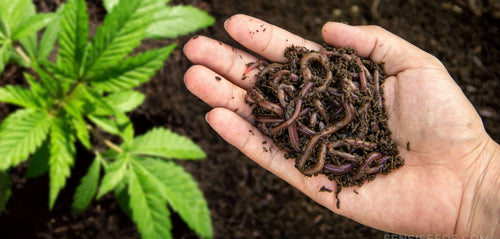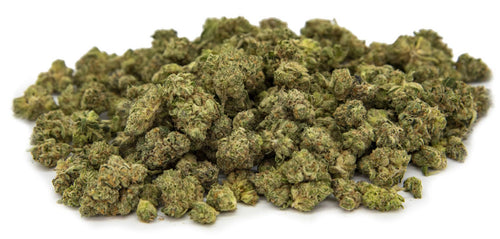#54: The Original Cannabis Club: Tracing the History of Les Club des Hashischins
#54: The Original Cannabis Club: Tracing the History of Les Club des Hashischins
Step back in time to 19th century Paris, an era of enlightenment and exploration; a city alive with intellectual curiosity and cultural revolution. Amidst this backdrop, a unique society emerged - Les Club des Hashischins.
Les Club des Hashischins was more than just a social gathering; it was an assembly of some of the most influential literary and artistic minds of the era, including luminaries like Victor Hugo and Alexandre Dumas. But what made this club truly unique was their shared fascination for a then-misunderstood substance - hashish.
In the chronicles of cannabis history, Les Club des Hashischins carves a significant place. Recognized as one of the first formal groups to deliberately investigate and chronicle the impacts of cannabis, their work greatly enhanced the comprehension and broader acceptance of its use. Their efforts not only moulded the viewpoints of their era but also steered the direction of future conversations about cannabis.
Today, the club's enduring legacy remains, symbolizing the timeless pursuit of knowledge and understanding, even in the face of societal taboos and stigmas. But to truly understand the significance of Les Club des Hashischins, we must delve into its history and explore how it all began.
In the beginning: The creation of Les Club des Hashischins
The inception of Les Club des Hashischins can be traced back to the Paris of the 1840s. It was an era characterized by an insatiable curiosity and a thirst for knowledge, paving the way for a group of like-minded individuals to form a unique society. The club's founders were Dr. Jacques-Joseph Moreau, a pioneering psychiatrist, and his close friends - literary figures Théophile Gautier and Charles Baudelaire.

Together, they embarked on a journey of exploration and experimentation with hashish, documenting their experiences and observations in an effort to better understand the substance. The club's name was inspired by the Arabic term "hashish" and emphasized its cultural significance in the East. Les Club des Hashischins quickly gained popularity among Parisian intellectuals, with its members including some of the most prominent names of the time.
Driven by a desire to challenge societal taboos and expand their knowledge, the club's members indulged in regular hashish sessions, conducting experiments and recording their findings. These gatherings were also accompanied by lively discussions and debates on various topics, making it not just a scientific inquiry but also a social event.
Because of its members' status and reputation, Les Club des Hashischins soon became a topic of intense interest and curiosity among the public. And while their work faced criticism and backlash from conservative factions, it also garnered widespread attention and admiration for its contributions to cannabis research.
From 1844 to 1849, the club held regular meetings and published their notable works on hashish. But as with all things, Les Club des Hashischins eventually came to an end when Moreau's scientific goals had been realized and his book, the first book ever written about a drug by a scientist, was published. However, its impact on cannabis history and the pursuit of knowledge continues to be felt today.
Noteworthy figures: The who's who of Les Club des Hashischins
Les Club des Hashischins boasted an impressive lineup of members, many of whom were highly accomplished individuals in their own right. Each brought their unique perspectives and contributions to the club's discussions and research, leaving a lasting mark on the study of cannabis.
Some notable members include:
Victor Hugo: A renowned literary figure and author of beloved works such as Les Misérables and The Hunchback of Notre-Dame, Hugo often spoke highly of the substance's ability to enhance creativity and expand one's perception.

Alexandre Dumas: Another prolific writer, best known for classics like The Count of Monte Cristo and The Three Musketeers, Dumas' writings often featured themes related to hashish and drug use, showcasing his interest in the subject.
Charles Baudelaire: A leading figure in the French symbolist movement, Baudelaire's collection of poems "Les Fleurs du Mal" featured a section dedicated to hashish, further cementing his connections with Les Club des Hashischins.
Théophile Gautier: As one of the club's founders, Gautier was a prominent figure in the Parisian literary scene and a close friend of Baudelaire. "Hashish, Wine, Opium" was one of his most notable works on the subject, documenting his personal experiences with hashish.
Gustave Flaubert: Author of the revered novel Madame Bovary, Flaubert's work often featured themes of escapism and hedonism, which may have been influenced by his experiences with hashish.
Jacques-Joseph Moreau: As the club's co-founder and a leading psychiatrist of his time, Moreau conducted numerous experiments with hashish, documenting its physical and psychological effects in his notable work "Hashish and Mental Illness."
The diverse backgrounds and expertise of these members contributed to the wide range of perspectives and research conducted by Les Club des Hashischins, making it a truly multidisciplinary society. Their efforts not only shed light on the potential uses and effects of cannabis but also challenged societal norms and paved the way for further exploration.
Hashish-infused gatherings: Inside the club's rituals

In the heart of Paris, a popular bohemian hangout situated in the Latin Quarter, the club met monthly at Hotel Pimodan. The gatherings were highly exclusive and secretive, with only a select group of individuals invited to attend.
At these meetings, members would gather in a dimly lit room decorated with Persian carpets and elaborate oriental furnishings. They would dress in ritualistic Arabic clothing and drink strong coffee laced with dawamesk, a greenish jam-like substance made with hashish, honey, pistachios, and spices. A spoonful of this concoction was said to induce a trance-like state, opening the mind and enhancing creativity.
As the effects of the dawamesk set in, members would engage in lively discussions and debates, often resulting in profound insights and revelations. Their behaviours would be carefully observed and recorded, with some members even taking notes while under the influence.
These rituals not only added an air of mystique and exoticism to the gatherings but also emphasized the seriousness of their experiments. The research and publications that came out of these meetings were considered groundbreaking, paving the way for future studies on cannabis and its effects.
It's worth noting that the club's gatherings were not without controversy, with some members facing legal repercussions and moral criticism for indulging in drug use. However, it was this defiance of societal norms and conventions that made Les Club des Hashischins a symbol of counterculture and intellectual enlightenment.
From taboo to enlightenment: The club's profound impact

The influence of Les Club des Hashischins on cannabis culture is substantial and enduring. As the members of the club were part of the intellectual elite, their open endorsement and exploration of cannabis played a crucial role in shifting public perceptions.
The club's activities challenged the prevailing norms and taboos surrounding cannabis use, helping to bring it into a more positive light within high society. Their dedicated research and documented experiences provided a scientific and experiential basis that countered unfounded fears and prejudices.
These gatherings showcased the use of cannabis as a facilitator for intellectual and artistic expression, rather than a mere means of intoxication. The club effectively served as a catalyst for the gradual acceptance of cannabis in society, transforming its image from a feared substance to a tool for enlightenment and creativity.
The shift in perception and societal attitudes towards cannabis, sparked by Les Club des Hashischins, continues to influence modern cannabis culture. The club's legacy serves as a reminder of the power of curiosity, open-mindedness, and community in expanding our understanding of the world around us.
A revolution in thought: The enduring significance of the club
As pioneers in the study and understanding of cannabis, Les Club des Hashischins brought a unique blend of scientific, artistic, and philosophical perspectives that significantly influenced societal attitudes and norms. The club's bold and rebellious spirit continues to inspire and shape modern-day cannabis culture.
The club also serves as a testament to the power of collaboration and community in scientific advancement. Les Club des Hashischins was a true multidisciplinary society that showcased the potential of diverse backgrounds and expertise coming together to push boundaries and challenge conventional wisdom.
As a symbol of intellectual and artistic freedom, Les Club des Hashischins remains a key part of literary history and an enduring source of inspiration. Its legacy continues to live on through the works and adventures of its members, making it a true testament to Les Club des Hashischins, a society that blazed the trail for modern cannabis culture. Cheers!
Back to all posts










